Baseball
Baseball is a fun game where two teams take turns trying to score points. One team hits the ball (batting), and the other tries to catch or throw the ball to stop them (fielding). Players run around four bases to score a point, called a run. If a batter misses the ball three times, they’re out. The game has nine rounds, called innings, where each team gets a chance to bat and field. The team with the most runs at the end wins. It’s like a game with a ball and bat, and if you know cricket, you might find some similarities but also some cool differences. Fall in the game and enjoy learning more about baseball!
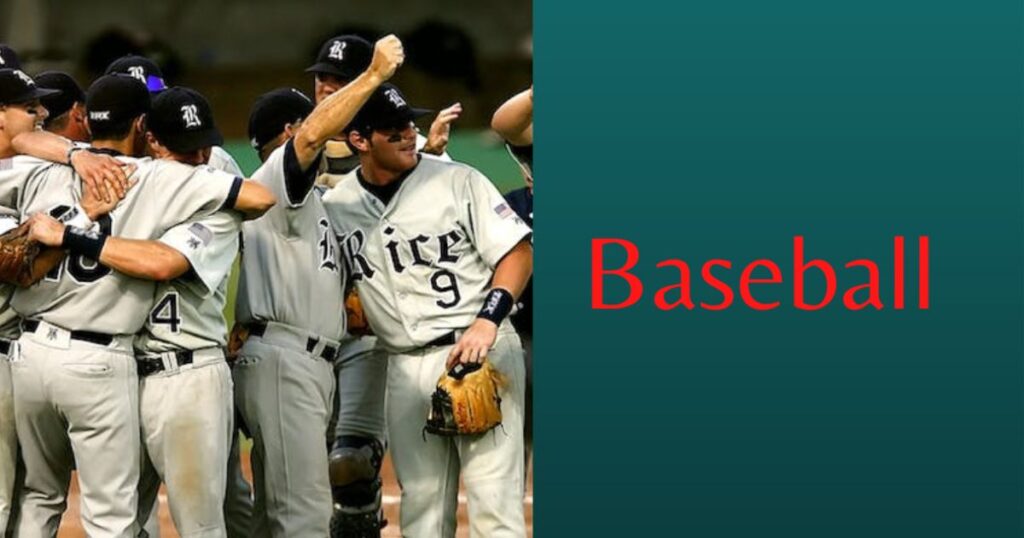
Baseball: A Globally Popular Sport with American Origins
Baseball, born in the USA, grew super popular not just there, but in places like the Netherlands, Italy, and even Australia! Here’s the scoop:
Who invented baseball:
- While many times linked to the USA, baseball originates from older English games like Rounders and Stoolball, which are kind of like baseball’s distant cousins. Cricket also shares some roots with these games.
Popularity:
- Baseball boomed in the USA after the Civil War, becoming a pro sport and attracting big money.
- But don’t forget about amateur baseball! People loved playing it just for fun, and it even brought together different groups like German Americans, African Americans, and Irish Americans in the 1800s.
So, while baseball has strong US roots, it’s spread its love for bat-and-ball across the globe!
Check out our related Article
Inside the Diamond: Baseball Tournaments and the Journey to Greatness
The Baseball Field: Components and Layout
Components of the Field:
The Infield:
- This is the busy center of the field where most of the action happens. It’s shaped like a diamond and made of dirt or clay.
The Outfield:
- This is the grassy area beyond the infield, all the way to the fence. It’s where outfielders wait to catch balls that get hit far away.
Infield Details:
- Bases: There are 4 white squares, called bases, placed evenly around the diamond, about 30 steps apart.
- Home Plate: This is the “start” and “finish” point, shaped like a home plate (not a square!), and it’s bigger than the other bases.
- Paths: Between the bases are dirt paths where players run.
- Pitcher’s Mound: In the middle of the diamond is a raised dirt hill called the mound. The pitcher throws the ball from a rubber plate on top.
Outfield Details:
Lines and Zones:
- Foul Lines: Two long lines on the field, like two big arms. If the ball is hit beyond these lines, it’s called a “foul ball”.
- Fence: Beyond the foul lines is the outfield, enclosed by a big fence. This fence can be far away, anywhere from 290 to 400 feet from home plate!
Special Spots:
- Catcher’s Box: Right behind home plate, there’s a painted zone where the catcher stands to catch pitches.
- Coaches’ Boxes & On-Deck Circles: These are special areas outside the field where coaches give tips and players wait their turn to bat.
- Bullpen: This is like a mini-field where backup pitchers practice throwing before entering the game.
- Dugout: This is a sheltered area where players and coaches relax when not playing.
Seeing the Game:
- Depending on the stadium, you might be close to the action or further away in the stands. But no matter where you sit, you can enjoy the fun!
So, that’s the lowdown on the different parts of a baseball field! It might seem like a lot at first, but with a little practice, you’ll be a pro at understanding the layout in no time
Essential Equipment for Baseball
Baseball players need some special gear to stay safe and play their best:
Head Protection:
- Batting Helmet: Like a bike helmet, but with a cage to protect the ears from fast pitches.
- Baseball Cap: Shade your eyes from the sun.
- Catcher’s Helmet: This one has a mask to protect the whole face from fastballs!
Clothes and Shoes:
- Uniform: Team jerseys and pants to show team spirit.
- Sliding Shorts: Padding for when players slide into bases.
- Cleats: Spiky shoes for a good grip on the dirt.
Tools of the Trade:
- Bat: Made of wood or metal, used to hit the ball.
- Baseball: The ball itself, cork inside and leather outside.
- Gloves: Leather hand protection for catching and throwing.
- Catcher’s Mitt: Extra big and padded for catching fast throws.
- First Baseman’s Mitt: Bigger and strong for scooping throws at first base.
- Batting Gloves: Help grip the bat and protect your hands.
That’s the basic gear rundown!
Baseball terms
Around the Bases:
- Around the Horn: Running from 3rd to 2nd to 1st to “go back” to a safe base.
- Force Play: A runner must move because the batter hit the ball.
- Texas Leaguer: A tricky hit that lands between fielders.
Hitting:
- Base Hit: The batter hits the ball and reaches at least 1st base safely.
- Bunt: Tapping the ball softly to advance runners.
- Cycle: Hitting a single, double, triple, and home run in the same game!
- Line Drive: A hard-hit ball straight to a fielder.
- Pull Hitter: Prefers hitting the ball towards their side of the field.
- RBI: Helping teammates score runs by hitting.
Pitching:
- Backdoor Slider: A sneaky pitch that looks like a ball but ends up a strike.
- Balk: The pitcher tricks runners into illegally moving.
- Change Up: Slows down the batter who expects a fastball.
- Brush-back: A scary-close pitch that doesn’t hit the batter.
- Chin Music: Another scary-close pitch near the batter’s face.
Fielding:
- Circus Catch: An amazing diving or jumping catch by an outfielder.
- Passed Ball: The catcher misses the ball, letting runners advance.
- Pick Off: Tagging a runner out before they reach a base.
Other:
- Box Score: Shows the game’s stats on the scoreboard.
- Double Header: Playing two games in a row.
- Grounder: A ball hit that bounces or rolls on the ground.
- Left On Base: Runners are still on bases when the out is made.
- Perfect Game: No batter reaches first base against a pitcher!
- Save: A relief pitcher protects the lead and finishes the game.
This is just a taste of baseball terms! Don’t worry, you’ll learn more as you watch and enjoy the game!
Watch the video
How to play baseball
The Goal: Score points by hitting a ball and running around bases, while the other team tries to stop you.
The Teams: Nine players on each team, one batting at a time, switching between offense and defense every few turns.
Playing: The pitcher throws the ball, the batter tries to hit it. If they do, they run around the bases, touching each one, to score a point. The other team tries to catch the ball or touch the runner before they reach the next base.
Positions: Each player has a job:
- Pitcher throws the ball.
- Catcher catches missed throws and throws the ball to other players.
- Infielders guard bases and catch nearby balls.
- Outfielders catch balls hit far away.
- Umpire makes sure everyone plays fair.
Outs: If the offense makes 3 mistakes (like swinging and missing the ball or getting tagged by the defense), they switch roles.
Game Length: Usually 9 turns for each team, trying to score the most points!
Batting Terminology
Hitting the Target:
- Fair Ball: Hit the ball between the white lines (like bowling between the pins!). You can run as far as you can!
- Foul Ball: Miss the target and hit the ball outside the lines. Not good, but you get another chance.
Strikes and Outs:
- Strike: Swing and miss, or hit a foul ball (think of it like three chances to hit the bullseye).
- Strike Out: Three strikes and you’re out! Time to sit on the bench.
Avoiding Strikes:
- Ball: The pitcher throws the ball outside the target zone. Good news, it doesn’t count as a strike!
- Walk: Get four balls (like getting four “free passes”) and you get to walk to first base!
Remember, hitting the ball and running around the bases is how you score points, so aim for those fair balls and avoid those strikes!
Pitching Styles:
Fastballs:
The bread and butter, straight and quick like a fastball steak!
- Cheese: Extra spicy, super fastball!
- Sinker: Dipping down like a sinking submarine!
Breaking Balls:
They curve and bend, confusing the batter like a magic trick!
- Curveball: Bends like a banana!
- Slider: A sharper curve, sliding in like a sneaky snake!
- Cutter: Moves away from the batter, slicing like a pizza cutter!
Off-Speed Pitches:
Slower pitches that catch the batter off guard, like a surprise dessert!
- Changeup: Looks like a fastball but arrives much slower, like a disguised ice cream sandwich!
- Forkball: Held with two fingers, rock like a jelly form!
- Knuckleball: No spin, unpredictable movement like a bouncing ping pong ball!
Bonus Round:
- Checked Swing: The batter almost swings, keeping the pitcher guessing.
- Quick Return Pitch: Back after you think it’s a normal pitch, like a surprise second helping!
- Wild Pitch: Oops, the pitcher throws the ball really far away from the catcher. This helps the runners on base move closer to the next base, like getting a free pass to the buffet
So, there you have it! Different pitches are like different tools in a toolbox, helping the pitcher “cook up” a strikeout!
Scoring Runs:
- Singles: Reach first base safely.
- Doubles: Two safe steps, reaching second base.
- Triples: Three steps, landing on third base.
- Home Runs: Hit the ball out of the park, all runners score (including the batter)!
Extra Fun:
- Bases Loaded: All bases have runners, a home run here is a Grand Slam (4 runs at once!)
- Shut Out: When one team completely shuts down the other, not allowing them to score a single run!
Outs or Errors:
- Tag Out: Touch you with the ball while you’re not on a base. Think of it like freeze tag!
- Foul Ball: Hit the ball outside the lines and someone catches it.
- Error: The other team messes up catching the ball, but you still get out.
- Force Out: Someone hits the ball and you have to move to the next base, but the other team gets there first and tags the base before you.
Bonus Round:
- Double Play: Two outs in one play! This happens when someone hits the ball, one runner gets tagged out, and another runner is forced out at the next base all at once.
Baseball Variants
1. Softball:
- Has lots of nicknames: Diamond Ball, Mush Ball, and even Kitten Ball!
- Plays on a smaller field with a softer (but not really!) ball.
- Gets done faster, with just 7 innings per game.
- Is big in the USA, especially for mixed-gender teams.
- Uses slightly bigger balls: 12 or sometimes even 16 inches around!
- Has 10 players per team instead of 9.
2. Stickball:
- Originated from baseball, modified for street play.
- Played with a bouncing rubber ball and a bat with a broom handle.
- Buildings serve as boundaries.
- Rules are often defined locally.
- The batsman hits the ball into the air, and if caught, the batsman is out.
- When the ball is hit really far away, it can land on a special area called the “porch” or even break a window. This is called a “home run” and is a big deal in baseball.
- Some versions don’t involve running between bases.
3. T-ball:
- It’s perfect for little hitters aged 4-7, even before they grab a real bat and ball.
- Think of it as training wheels for baseball and softball!
- No need for someone to throw the ball. You get to POW! it yourself!
- A bouncy ball sitting on a bendy stick stuck in a movable box. That’s your setup!
- Just swing your bat and WHAM! hit the ball as hard as you can.
- The more you play, the stronger your swing and the better your aim will get!
Ready to become a hitting hero? Grab your bat and let’s play!
4. Wiffle Ball:
Playing baseball, but inside and with a special ball and bat that’s not as hard. That’s what softball is It was invented in 1953 and is a fun way to play a similar game, but with a softer ball and bat.
- Unlike baseball, you play inside a walled court, keeping things contained and exciting!
- It’s like taking the best parts of street games and summer camp classics and turning it into a more structured sport.
- Plastic bats and balls make it safe and easy for all ages to join in the fun.
Ready to trade the open field for a walled court? Grab your bat and see what this sport is all about!
5. Rounders:
- A basic version of baseball played in England in the 18th century.
- Bat and ball games are popular among school children.
- Similar rules and equipment to baseball and cricket.
- The ball is small, hard, and covered in leather.
- The bat is shorter, made of wood, metal, or plastic, with a rounded end.
- Batting rules and innings are similar to baseball, but points are earned by finishing a circuit past four bases without getting out.
6. Rigoball:
- No bats needed! Players throw and catch the ball among themselves.
- Everyone gets involved! No designated batter, everyone gets to show off their skills.
- No pitcher’s mound, just pure action! Played on a flat court, everyone’s closer to the action.
- Faster than baseball? You bet! This game keeps you moving and thinking on your toes.
- Boys and girls, all welcome! It’s a game for everyone to enjoy.
- Tweaked rules for more fun! Forget long waits, this game keeps things exciting.
- Safer and more relaxed than baseball! Perfect for all ages and abilities.
Baseball famous players
| Serial No. | Famous Player |
|---|---|
| 1 | Babe Ruth |
| 2 | Willie Mays |
| 3 | Ted Williams |
| 4 | Honus Wagner |
| 5 | Ken Griffey Jr. |
| 6 | Mickey Mantle |
Babe Ruth:
Baseball legend who could both throw fire and hit rockets! That’s Babe Ruth, also known as the Bambino or the Sultan of Swat.
- He wasn’t just any player, he led his team to victory in the World Series twice, back in 1916 and 1918!
- He started as a lefty pitcher, throwing strikes that were almost impossible to hit.
- But then, bam! He became a home run king, smashing balls farther than anyone ever had before!
Think of him as a baseball superhero, with pitches so fast they looked like magic and hits so powerful they sent the ball flying way over the fence!
Willie Mays:
He was a superstar baseball player from America, known for both hitting and amazing catches. People called him “Say Hey Kid.” He played after Black players were finally allowed in the big leagues, and became a huge success!
Ted Williams:
This baseball legend could hit like crazy and catches like nobody’s business! Fans had tons of nicknames for him: “Say Hey Kid,” “Splendid Splinter,” and “Teddy Ballgame.” He played for the Boston Red Sox and did something unique – he hit lefty but threw righty!
Honus Wagner:
This baseball whiz was called the “Flying Dutchman” because he was super fast and energetic! People thought he was the best shortstop around in his day. He led his team, the Pittsburgh Pirates, to three championship wins and their first-ever World Series victory in 1909! He could throw the ball like a rocket and do pretty much everything well on the field.
Ken Griffey Jr.:
This baseball champion played for the Seattle Mariners and was famous for two things:
- Hitting bombs: He was really good at hitting the ball very far and strong. He was a great hitter and people called him a “fighter” because he hit the ball so well.
- Making amazing catches: He was like a superhero in the outfield, jumping and diving to catch the ball. He was very good at catching the ball, even the hard ones.
He was so good at catching that he won an award called the Gold Glove for nine years in a row! That’s incredible!
Mickey Mantle:
This baseball star had two cool nicknames: The Commerce Comet and The Mick. He was famous for two things:
- Hitting the ball super far: He could hit the ball with power from both sides of the plate, making him a rare and valuable “switch hitter.” His home runs were so long, they seemed to go forever!
- Catching everything in sight: As a center fielder, he was incredible at grabbing even the most difficult fly balls. He would jump, leap, and dive to make plays that nobody else could!
Conclusion
Baseball is an awesome sport, and your guide did a fantastic job breaking it down! Here’s a possible conclusion that ties everything together:
So there you have it! From the basic rules and equipment to famous players and fun facts, you’re now equipped to enjoy baseball like a pro. Whether you’re cheering on your favorite team, playing a backyard game with friends, or just curious about the sport’s history, remember: the spirit of Baseball lies in its fun, teamwork, and the excitement of every play. Grab a bat, put on your cap, and step up to the plate – it’s time to experience the magic of baseball!
Frequently Asked Questions About Baseball
1. What is a Baseball game?
Ans. Baseball is a bat-and-ball sport played between two teams of nine players each. The pitcher throws a leather-covered ball toward the batter on the opposing team
2. How many innings in baseball?
Ans. It consists of 9 regulation innings.
3. How long is a baseball game?
Ans. Games are running about the 2 to 3-hour range.
4. In which year was Baseball invented?
Ans. 1869
5. How much does a baseball weigh?
Ans. The weight of the ball will be 5 ounces.
6. Where was Baseball invented?
Ans. It was invented in New York
7. what is the Baseball bat?
Ans. Baseball bats’ most common size is found between 24-34 inches.
8. How many players are on a Baseball field?
Ans. A team can have a maximum of 9 players at any one time on the field.
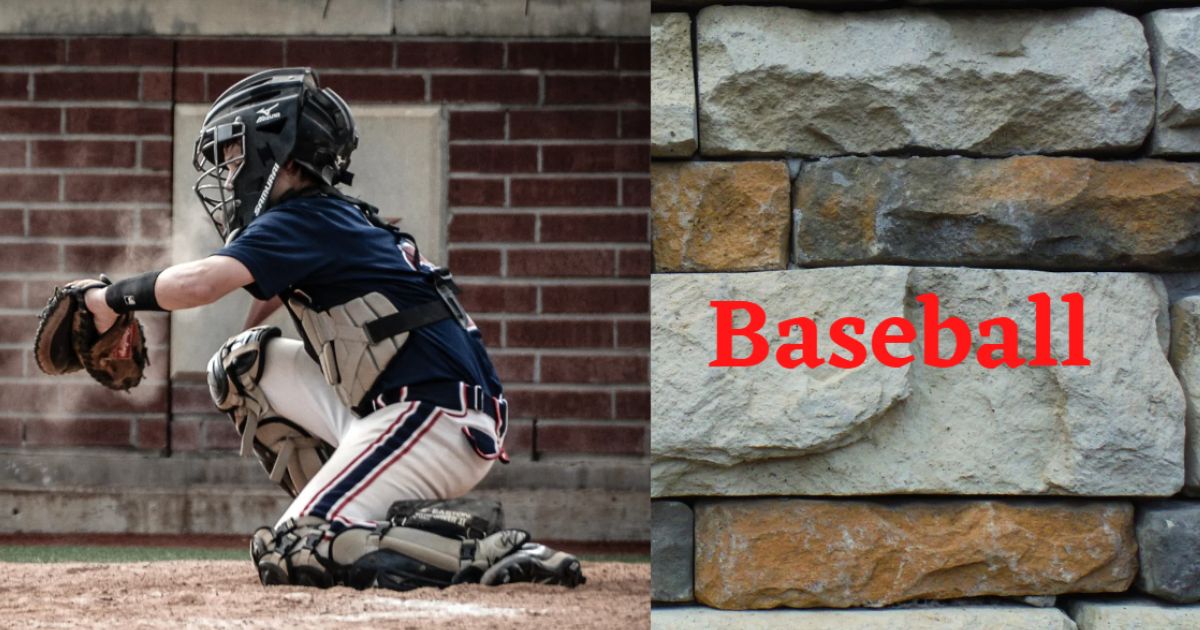
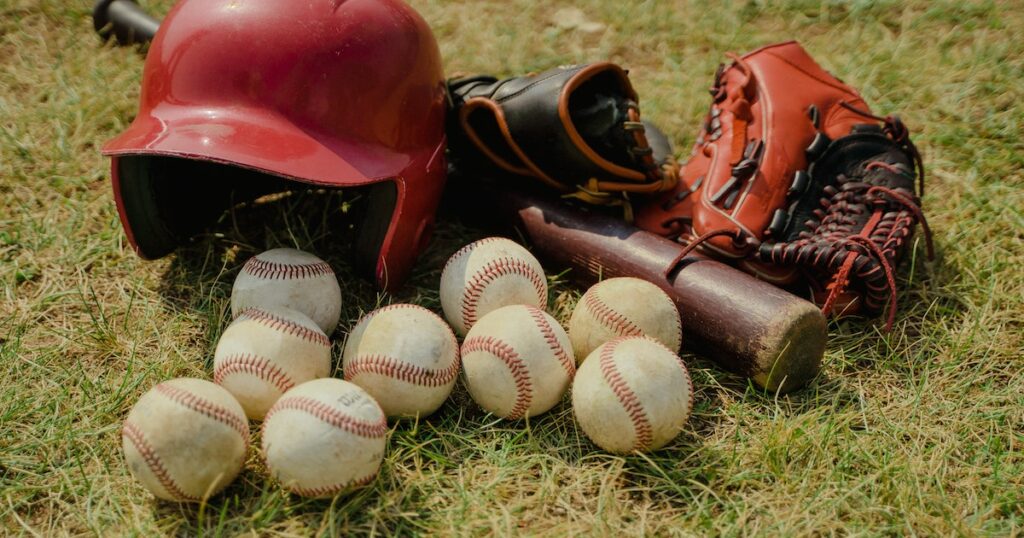
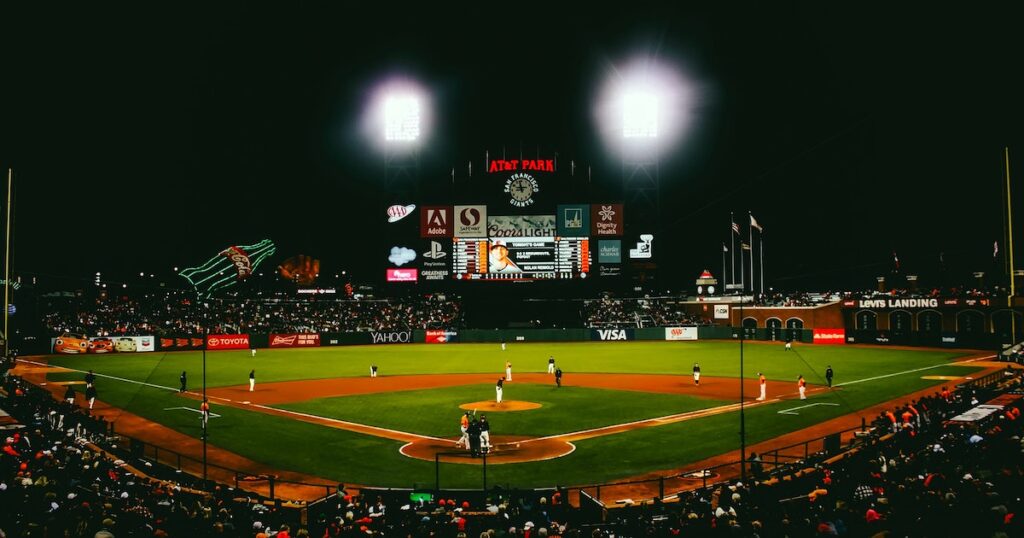
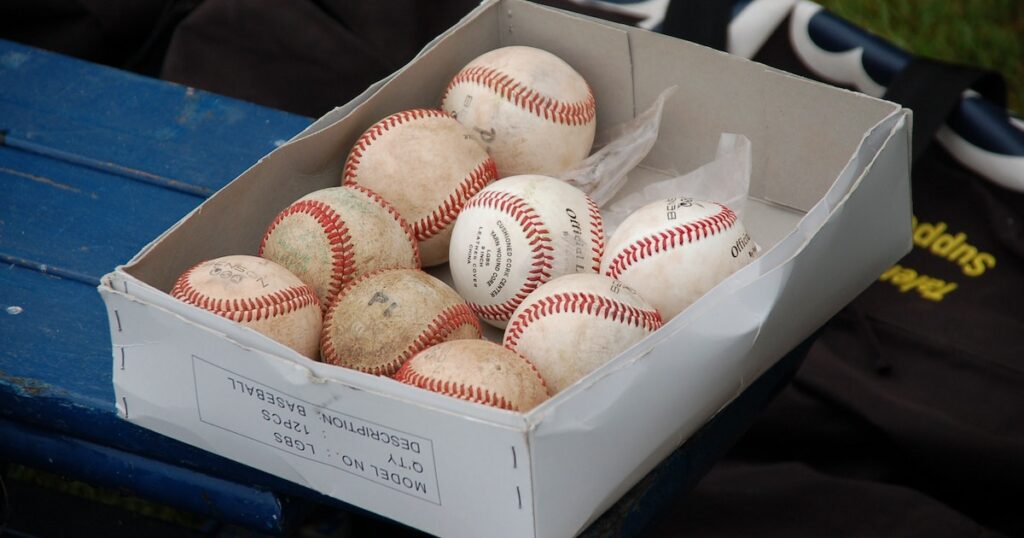
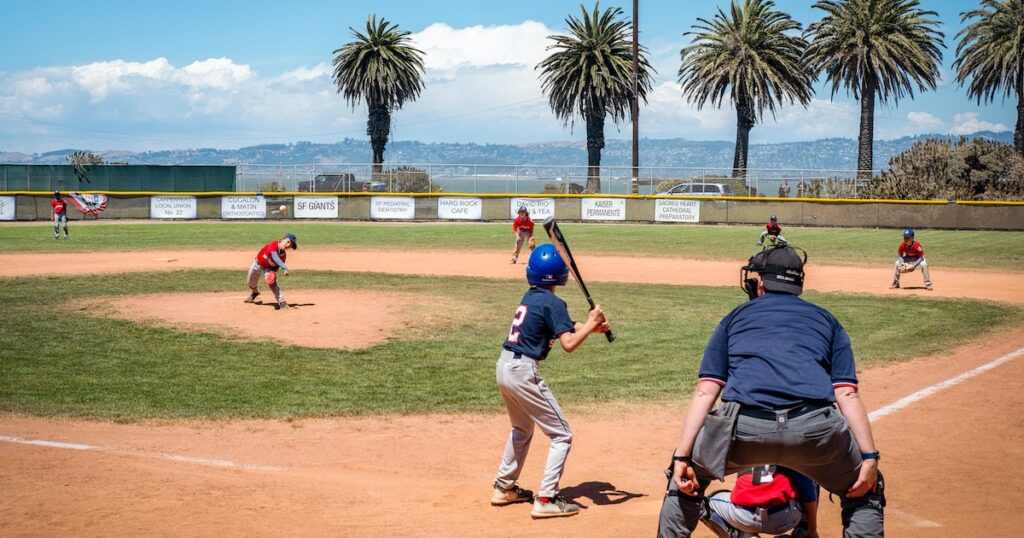
2 thoughts on “Mastering Baseball: A Comprehensive Beginner’s Guide to Rules, Skills, and Strategies”